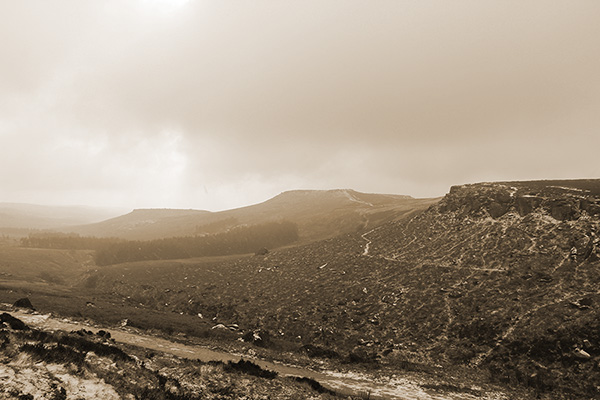The Peak District is a beautiful National Park in the heart of England. Along with other National Parks around the United Kingdom it is packed full of beautiful landscapes, prehistoric sites and historic towns and villages. You can buy a guide book and see all the popular sights but with the right navigational tools you can enjoy a much richer experience than simply following the tourist trails.
When I learned to read a map that’s all that was available, maps, a compass and common sense. Now anyone exploring the countryside has a lot of technology that can help the, if used properly. I say that because as anyone with a satellite navigation system in their car knows relying on technology blindly can get you into all sorts of trouble. Ask the Eastern European lorry driver who typed “Kingston” into his satnav and ended up in Kingston Upon Hull and not Kingston Upon Thames.
Maps
First of all, if you’re visiting The Peak District regularly or for longer than a day trip you should get yourself a good map from the Ordnance Survey and study it in conjunction with a good guide book before you arrive. That way you can ensure you take in as much as possible and not miss something that may only be a few kilometres out of your way or even just the other side of a dry stone wall.
The maps I’d recommend are the Ordnance Survey’s “Explorer” series, numbers OL1 and OL24 that cover the Peak District National Park. These maps come as conventional paper or laminated waterproof variety. The latter has the advantage of being more durable and will not fall apart should you get caught outside in a storm; Yes, it does rain from time to time in the Peak Park.
You could buy the Landranger 110 and 119 maps as they cover pretty much the same area and are half the size but because their scale is 50,000:1 to the Explorer’s 25,000:1 they are much less detailed.
Whichever you chose to purchase it’s best to shop around because at around £15 each for the waterproof versions they are not cheap. Indeed we managed to buy our current OL1/24 set for £9 each just by comparing prices at three stores in one central Derbyshire town.
Oh, and when you buy Explorer maps from the Ordnance Survey range you get an electronic version to use in conjunction with an App on your smartphone. However I found that when you lose data coverage this doesn’t well/at all when I tried it. I’ll test it again when we’re next in a remote area and update this post.
And you should get a compass, which will cost you less than £5.
GPS
If you’re really serious about walking and want the ultimate in rugged, waterproof and therefore expensive navigational aids then you should buy yourself a GPS device.
However I’m not going to write you a buyer’s guide to them right here as it’s a whole article in itself. I’ll return to that at a later date for the serious walkers amongst you.
Smartphones
Before the walking purists howl with derision I have to say that using a smartphone has to be one of the most practical ways of navigating when you’re walking, running or cycling around the Peak District. So many of you already have one that for little or no outlay you can give yourself GPS tracking, even route mapping and step counting with the addition of one of many free Apps.
The simplest way is to use something like the Google Maps App. Until recently this wasn’t a practical option as a reasonable connection to the internet via 2G/3G/4G was required and that’s something that much of the Peak District (dependant on your network provider’s coverage) wasn’t able to supply. Now Google allows you to download map data to your smartphone so as long as you can get GPS signal it will work … so long as you have previously downloaded the correct maps to you phone.
The application I use is “Map My Walk” from Under Armour. The free version works OK, even in bad signal areas though it can take forever to start up if there is mobile data available and worse still the App insists on downloading the in-app adverts even when there is no data available, locking up your phone at the end of a walk when you “Finish Workout”. However I’m not complaining as it’s free and is great at mapping your walk.
Other Apps are of course available.
All of the above have advantages and disadvantages but personally, unless you’re camping out regularly and want to spend £200+ on a dedicated GPS device you should have at least bought a good map and compass – and learnt how to use it.
If you want to use your smartphone then make sure its charged and don’t rely on it as especially in bad weather you can lose satellite reception. To ensure you don’t run out of power buy a small powerbank so that in an emergency you can still call for help.







This is a really interesting article. With my partner we were wondering which map to buy because there are so many on the market and thanks to you I have the answer. We tried with the phone but yes most of the time we don’t have any network so we always ended up lost.
Thanks for the feedback. Glad to hear that the article helped and we hope you have some great adventures in the Peak District